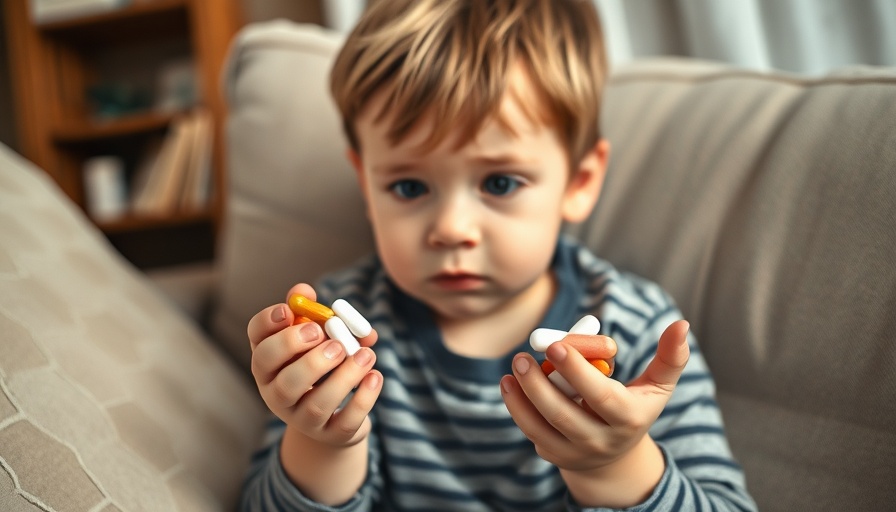
Understanding Antibiotics: A Double-Edged Sword
Antibiotics have revolutionized medicine since their discovery, providing a solution to bacterial infections that could once render patients helpless. However, rising concerns about the long-term effects of their use, especially in young children, echo the necessity for a balanced approach. The recent study published in the Journal of Infectious Diseases reveals a critical warning: while antibiotics save lives today, their repeated use during childhood could lead to chronic health issues later in life.
The Gut Microbiome: A Crucial Component
The gut microbiome, a complex community of microorganisms living in our intestines, is pivotal for digestion and immune function. This balance can be disrupted by frequent antibiotic use, leading to potential health complications. According to the recent research, children who received multiple rounds of antibiotics were more likely to develop allergic conditions such as asthma and food allergies. Such findings indicate that while antibiotics eliminate harmful bacteria, they may also eliminate beneficial ones, establishing an imbalance that can affect health long-term.
Link Between Antibiotics and Long-term Health Issues
The study analyzing over a million children's health records indicates a clearer picture of how repeated antibiotic exposure correlates with various chronic conditions. Notably, the risk for asthma and food allergies was heightened among those who had multiple antibiotic treatments before the age of two. This period is crucial for developing a strong immune system and a healthy gut microbiome that protects the body against allergies and other conditions.
Exploring the Connection to Intellectual Disabilities
Caution is being raised over a potential link between antibiotic use in early childhood and the risk of developing intellectual disabilities. Although the connections require further study, this revelation adds another layer of complexity to the ongoing discussion about responsible antibiotic use. Parents have reason to be concerned and should discuss any antibiotic treatments with healthcare professionals, focusing on the necessity and duration of treatment.
What Does This Mean for Parents?
Parents are an essential part of the equation when it comes to managing their children's health. Despite the risks, antibiotics are sometimes necessary. The advice from health professionals remains critical: parents should consult with doctors on when antibiotics are needed and whether alternative treatments may be suitable. They should be advocates for their children’s well-being, ensuring that every medical choice weighs the benefits against the potential long-term impacts.
Striking a Balance: The Future of Antibiotic Use
The future may offer solutions that allow parents and healthcare providers to balance the benefits of antibiotics with their potential risks. Continued research could lead to developments in targeted therapies that avoid disrupting the microbiome while still effectively treating infections. This ideal scenario encourages a more nuanced understanding of antibiotic treatments as essential yet potentially dangerous tools in pediatric medicine.
Practical Tips for Parents
- Stay informed: Familiarize yourself with the signs of infections to determine whether antibiotics are needed.
- Ask questions: Engage with your doctor's recommendations regarding your child's health and treatment plan.
- Explore alternatives: Consider non-antibiotic treatments when appropriate, such as probiotics or other natural remedies.
- Promote a healthy lifestyle: Encourage a balanced diet rich in fiber to support gut health, along with regular exercise and adequate rest.
Conclusion: Evaluating the Role of Antibiotics
As concerns about antibiotic use in children continue to gather momentum, it is essential for parents to be proactive in understanding their implications. The complexity of antibiotics, while invaluable in treating infections, carries significant responsibility. As children grow, fostering a healthy environment with judicious medication use will be paramount in supporting their long-term health and well-being.
 Add Row
Add Row  Add
Add 



Write A Comment